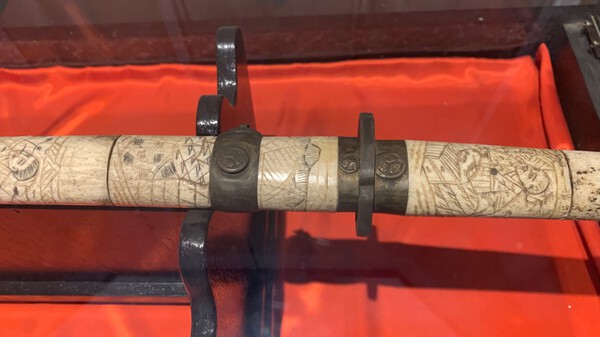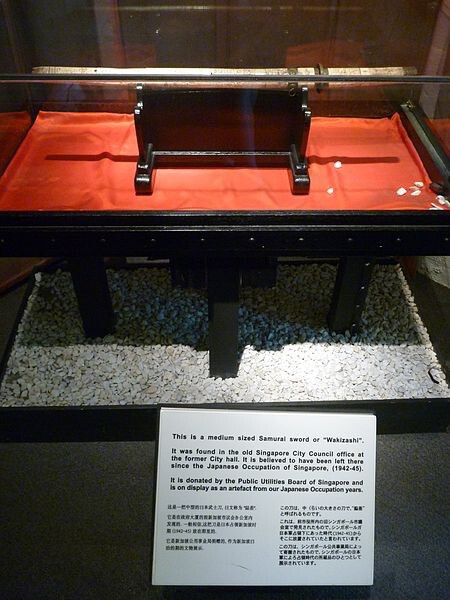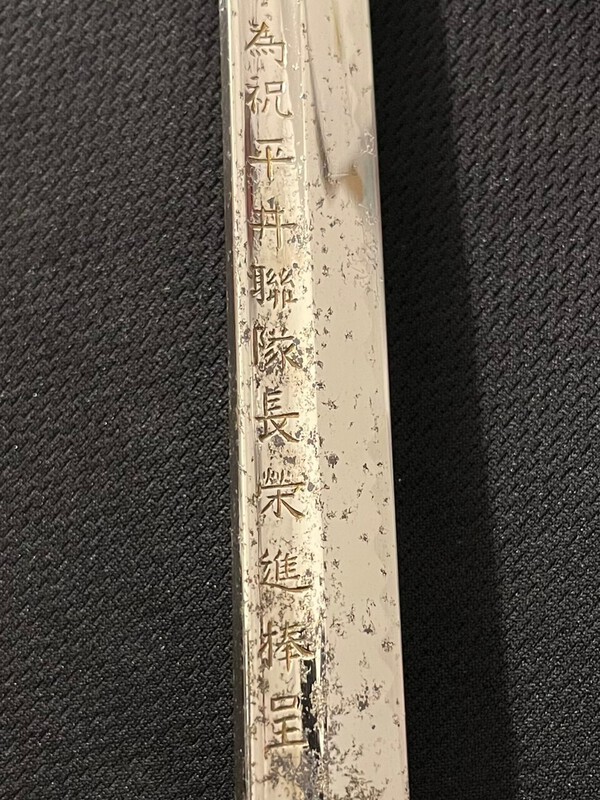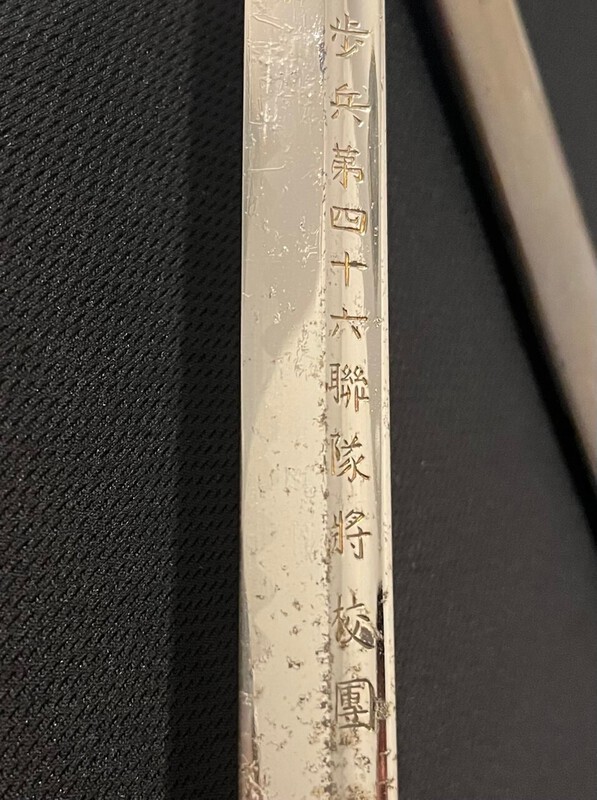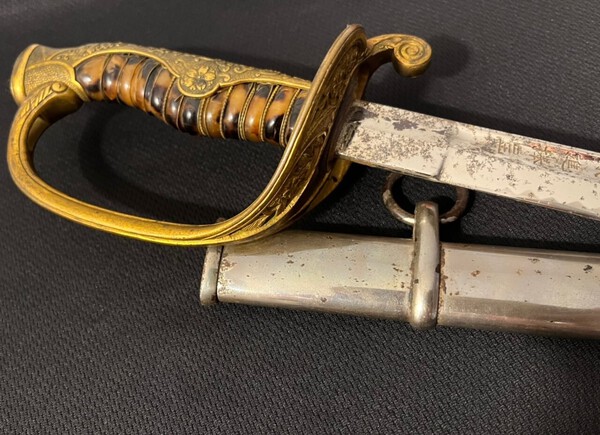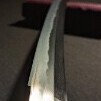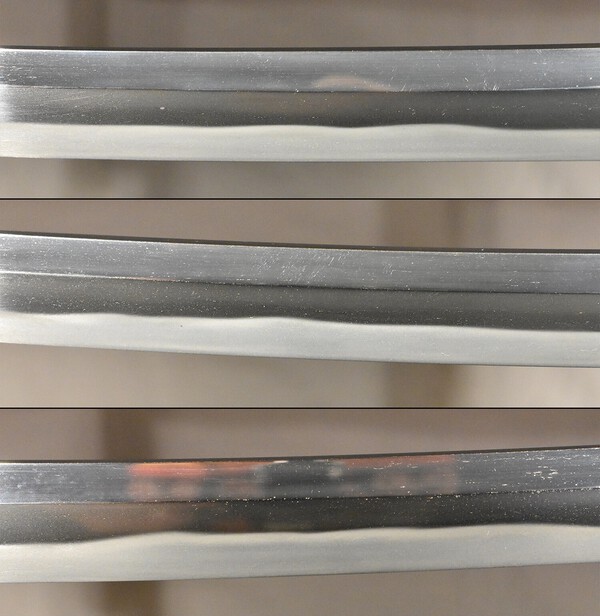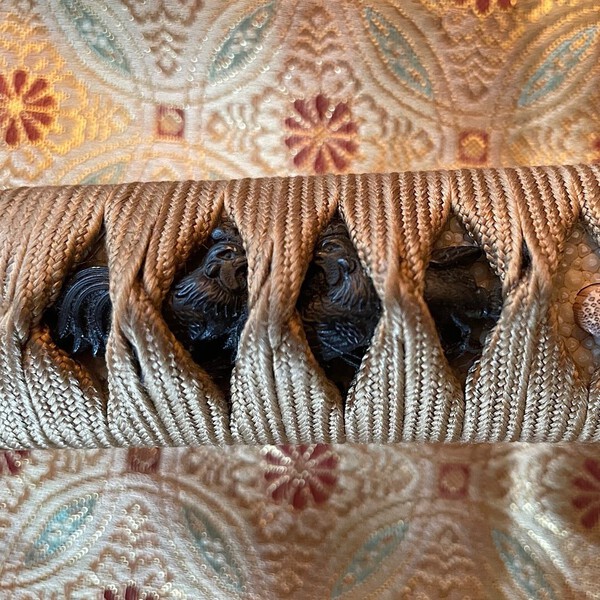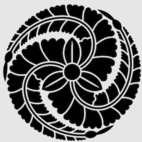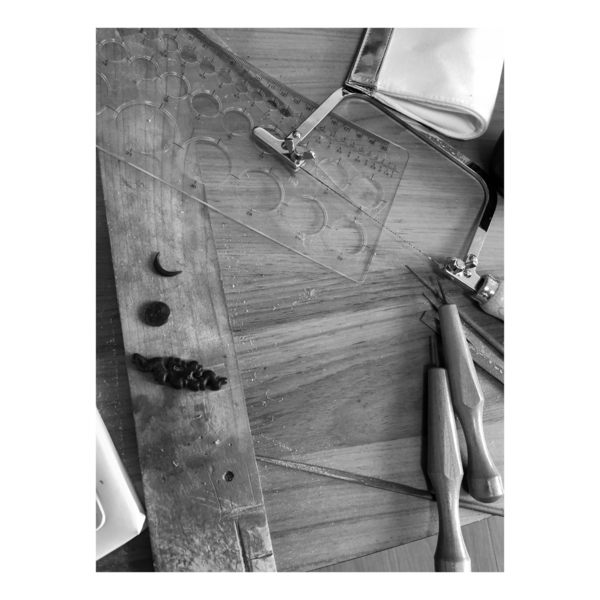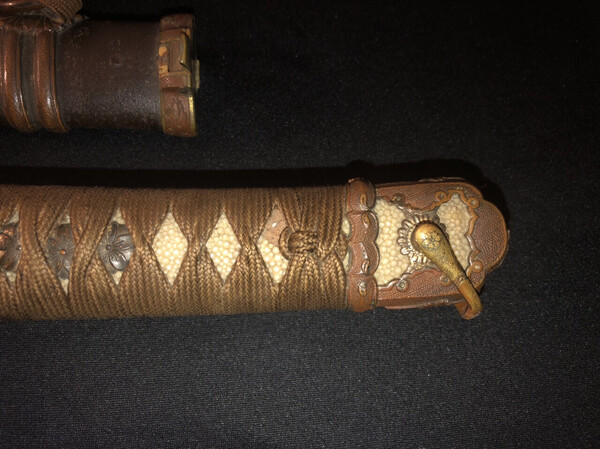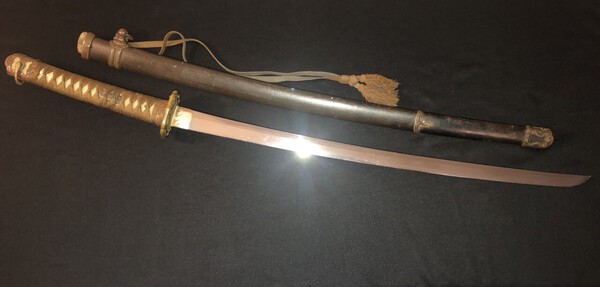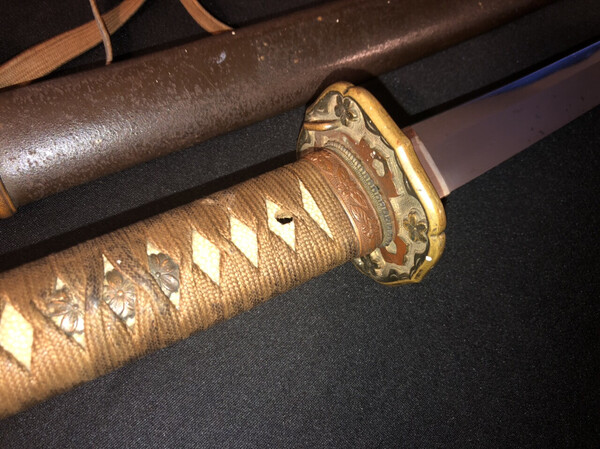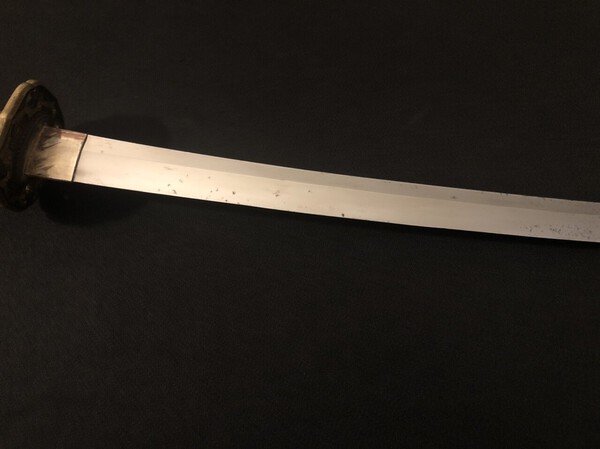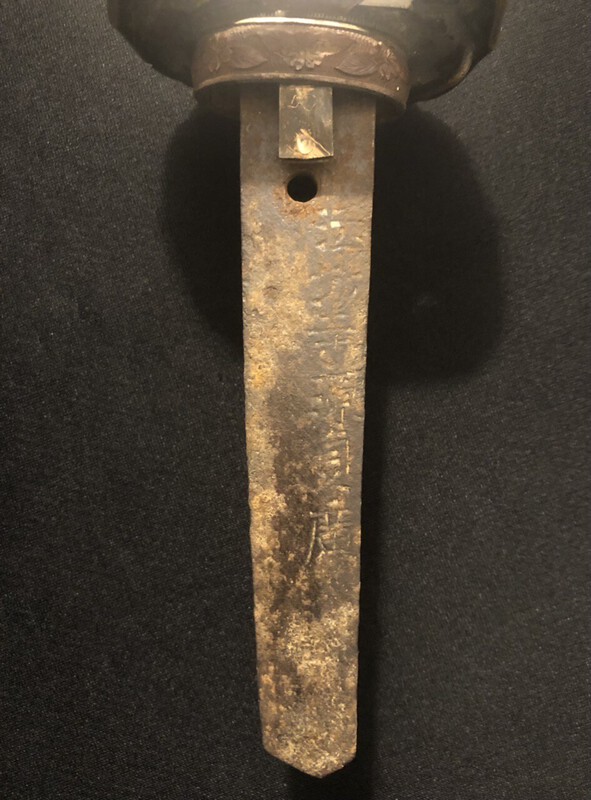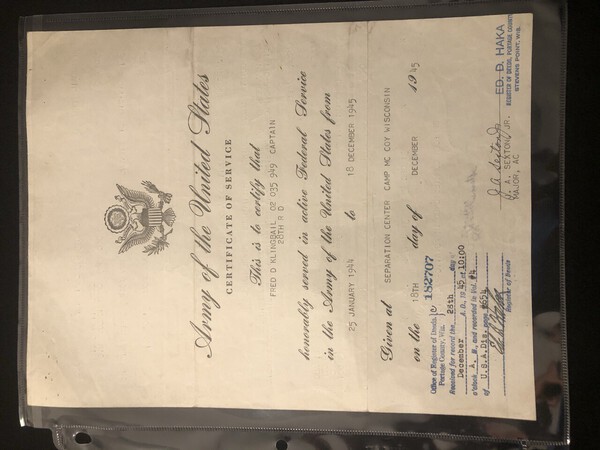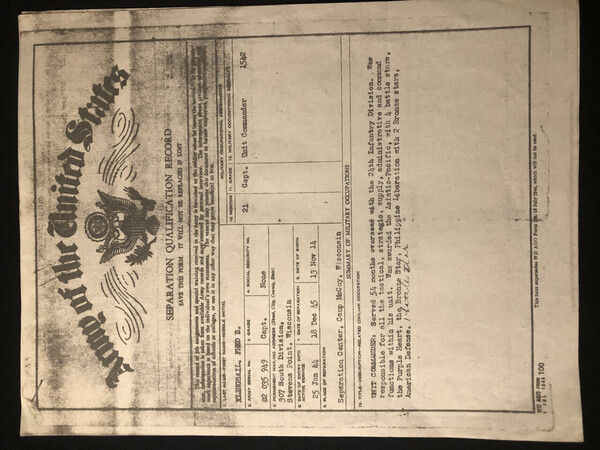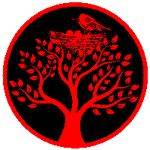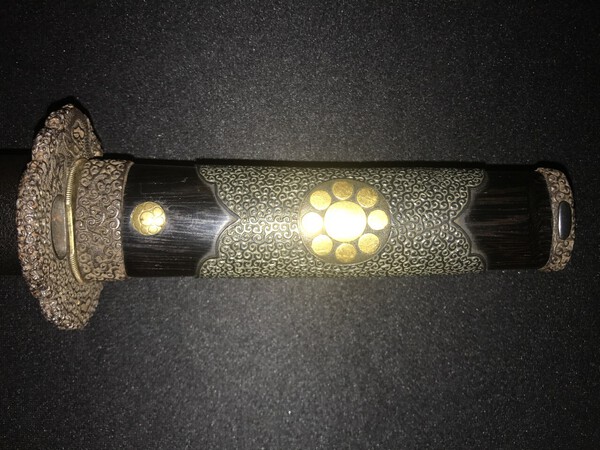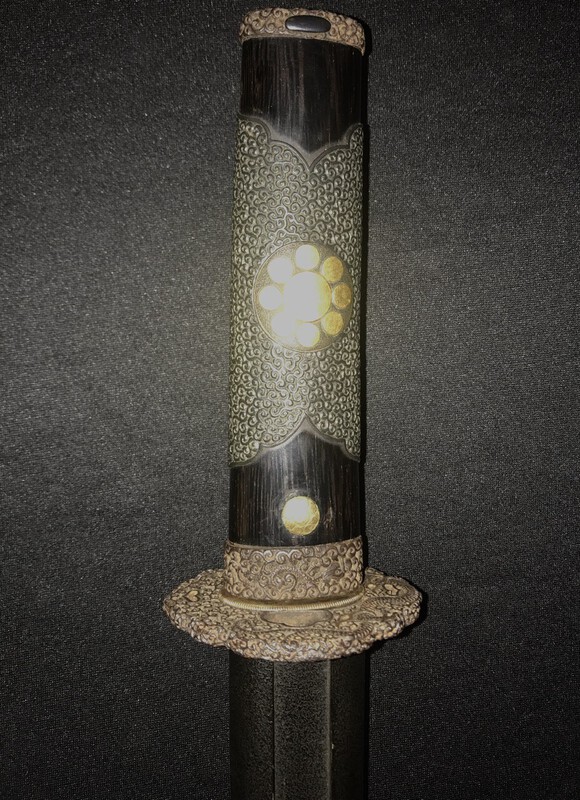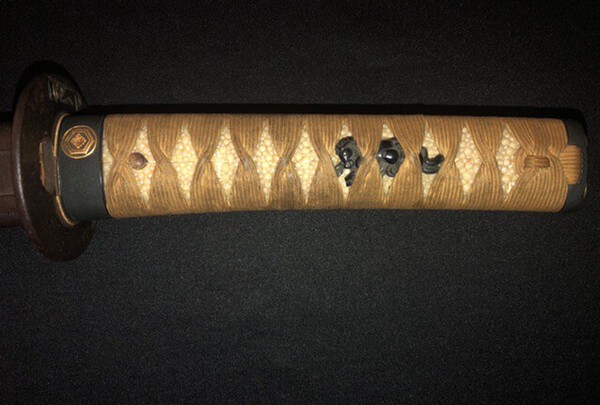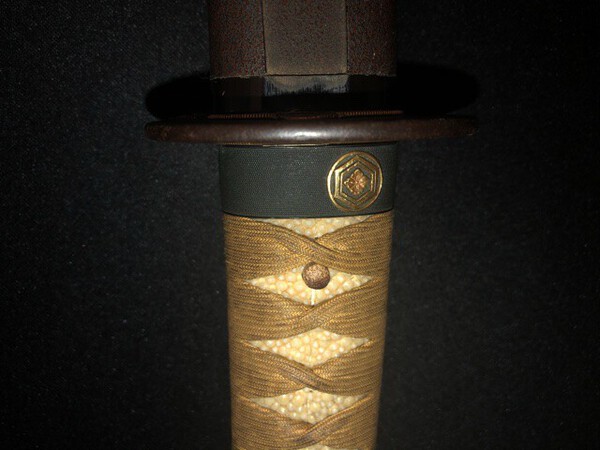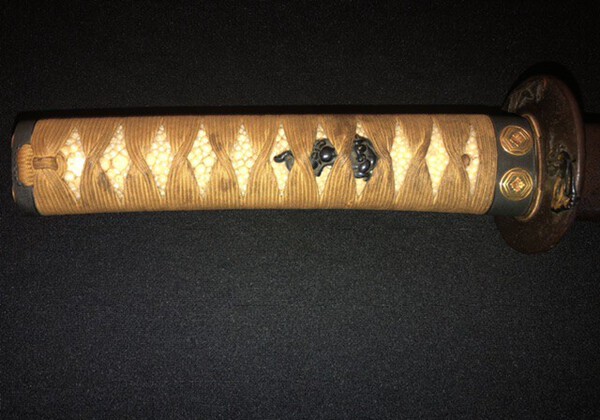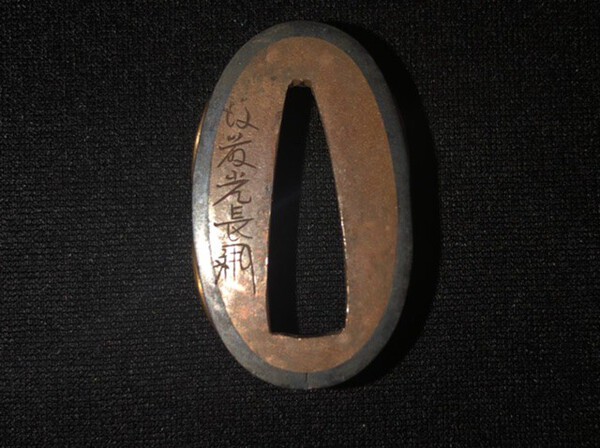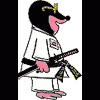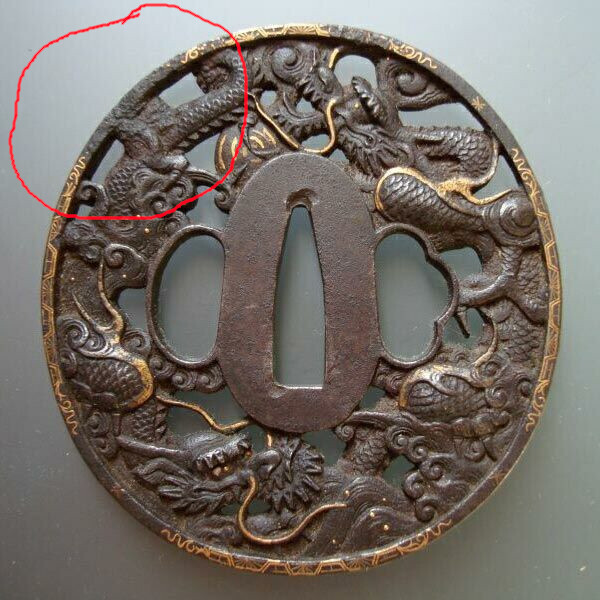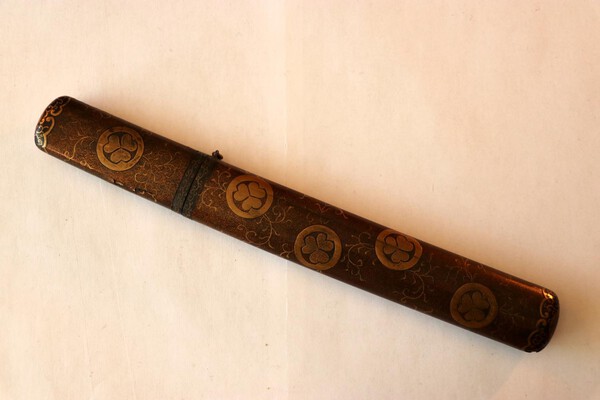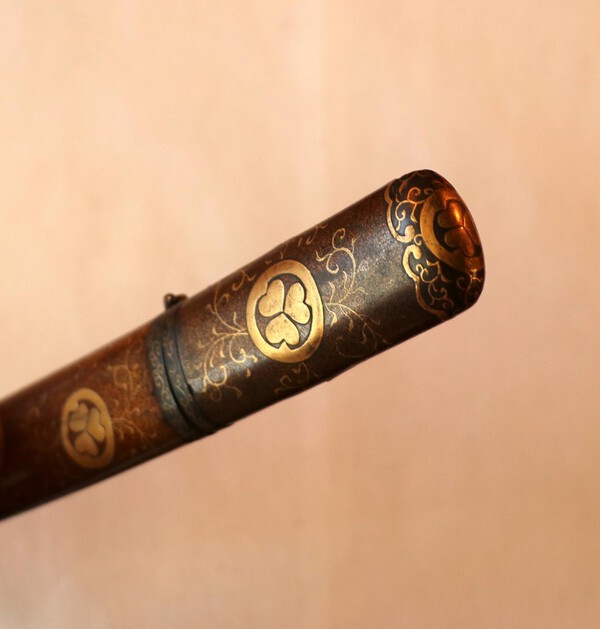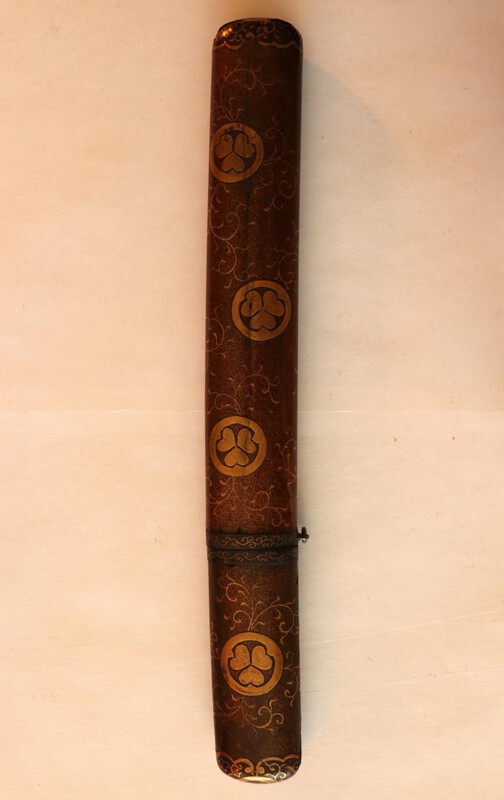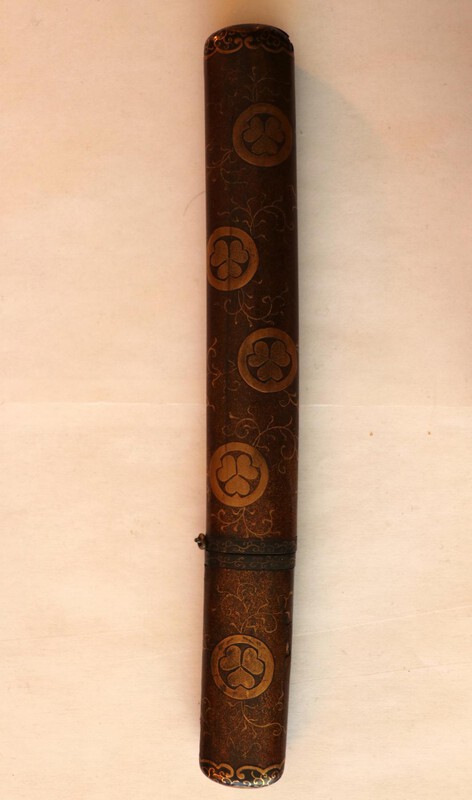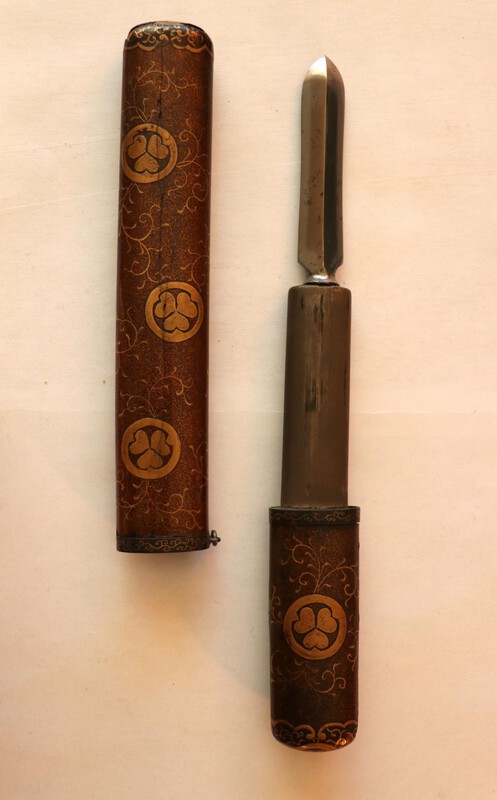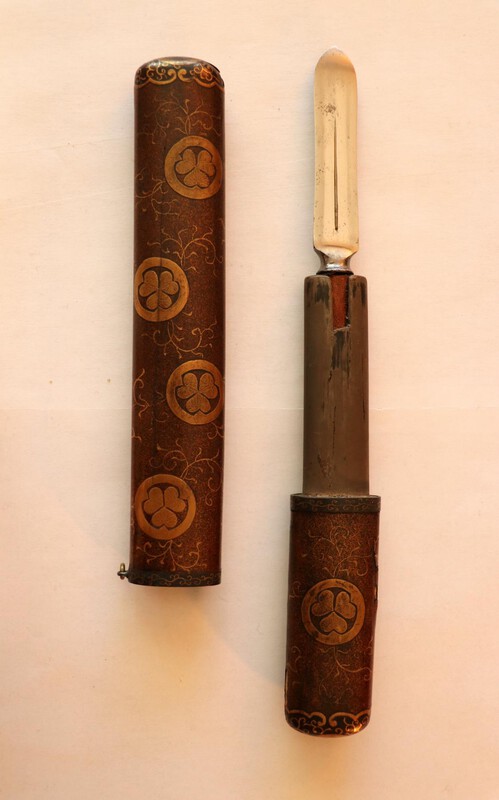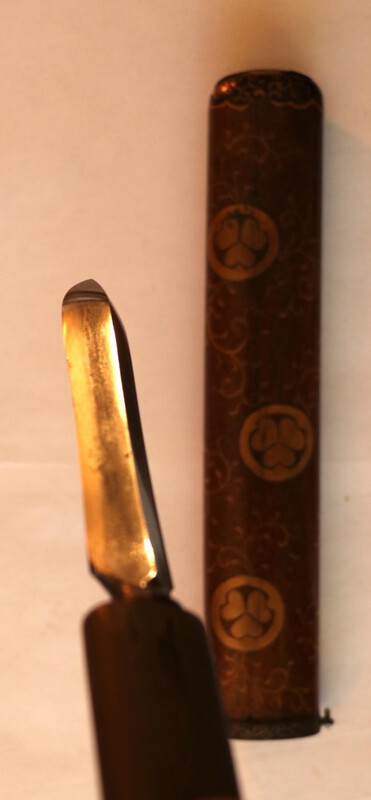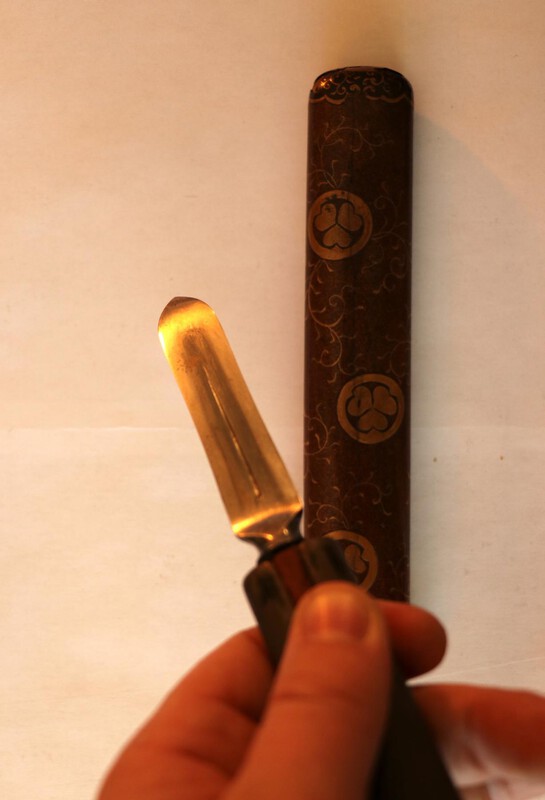Search the Community
Showing results for tags 'koshirae'.
-
Built in 1878, it was one of three forts (the other two being Fort Connaught and Fort Serapong) that had been constructed on the island to protect the New Harbour (later renamed Keppel Harbour) and the straits around Singapore. The Fort played an important role in the Battle for Singapore and served as a Prisoner-of-War camp during and after the Japanese Occupation. https://www.roots.gov.sg/places/places-landing/Places/national-monuments/fort-siloso Just sharing an ivory koshirae for a wakizashi displayed at Fort Siloso Singapore. I’m not too sure if there’s actually a nihonto hidden inside it. Last image is from Wikimedia Commons.
-
This sword was discussed in detail on the nmb. Super interesting. Here is the thread: https://www.militaria.co.za/nmb/topic/40635-translation-help-on-additional-kanji-on-masanaga-gendaito/#comment-419437 1 WW2 Japanese Army Officer's sword made by Masanaga available. Masanaga's given name was Ito Kishinaga. While making swords at the Minatogawa Shrine, Masanaga signed his swords under the name Masakiyo. He also made Special Order swords at a nearby forge. When making swords at this forge, called the 七生刀鍛煉道場 'Seven Lives' Forge, he signed as Masanaga. See photo of the graphic provided by Trystan on the Nihonto Message Board on Ito Kishinaga/Masanaga/Masakiyo. The Minatogawa Shrine was dedicated to Kusunoku Masashige. Before he lost his life in battle in 1336, he uttered the phrase 七生報國 'Shichishō Hōkoku'. This means 'would that I had seven lives to give for my country'. As mentioned above, the forge near the Minatogawa where Special Order naval or army swords were made, was referenced as the 'Seven Lives' Forge. This sword is dated October 1943. The number '17' is stamped on the nakago's mune. This sword has two latch releases. See photo provided from Jim Dawson's book Swords of Imperial Japan 1868-1945 Cyclopedia Editiion. The blade measures 26 5/16" (67.6 cm) (measured properly from the blade tip to the notch in the blade spine). This traditionally-made gendai katana has an expertly water-tempered wavy hamon. This Japanese WW II Army Officer's katana is in 1944 shin-gunto mounts (aka Type 3 mounts). CONDITION: The handle wrap is perfect. The sword locks in the saya, and the lock release buttons function perfectly. The saya is perfect. There are some tiny specks of paint on one side--but the whole condition of this sword is such that it just blends in--the condition is so exceptional. There are two nicks in the blade edge. They are such that they only go 10-15% of the thickness of the hamon. The blade will polish beautifully if desired. But the blade is exceptional without a polish. The temper line and boshi are perfectly healthy. This sword is guaranteed against fatal flaws. $3600 (If paying via credit card or PayPal, 4% credit card fee/PayPal fee added to the purchase price). Here is the link to the complete complement of photos: https://stcroixblades.com/shop/products/masanaga-Japanese-ww2-samurai-army-sword-1944-mounts-minatogawa-shrine/ --Matthew Brice www.StCroixBlades.com
-
1 antique Japanese Meiji Period cloisonne tanto sword available. This very fine antique cloissonne mount Japanese tanto sword would make an important addition to any collection. This tanto is unsigned. It has a genuine Japanese blade. Cloisonne koshirae/mounts are difficult to find without damage, most have significant damage—and this one has no damage at all! The fittings on this cloisonne tanto are all intricately hand-carved brass. The blade measures 8 5/8" (21.9 cm) from blade tip to the bottom of the notch in the habaki. $3500 plus postage (and PayPal or cc fee)
-
Exceedingly rare Japanese WW2 Iida mount Army Officer's gendai sword available. This sword is among the most rare of all Japanese military swords. These mounts are referred to as the Iida seal--or the Iida lock, named after its inventor Iida Kunitaro. This exceptional Japanese Army sword would make an important addition to any collection. This sword was made the 2 Million Yen smith, Imai Sadashige. Imai Sadashige earned the title of Sword Forging Teacher/Special Honor Noted Seat at the 1941 Sword Exhibition. Sadashige is featured on page 150 & 151 in John Slough's book, An Oshigata Book of Modern Japanese Swordsmiths 1868-1945. The blade measures a long 26 7/8" (68.3 cm) from blade tip to the notch in the blade spine. The Iida lock is a weather-proofing mount designed to keep water and dirt out of the saya. This exceptionally rare sword would make an important addition to any collection. Information on the Iida (IIDA) lock can be found on pages 168 & 169 of Jim Dawson's book, Swords of Imperial Japan 1868-1945 Cyclopedia Edition. Additional information can be found in Fuller and Gregory's book Japanese Military and Civil Swords and Dirks. The hamon is exceptional--the temper line billows almost all the way up to the shinogi line. Once polished this sword will be a screamer. Sadashige's work is exceptional. Look at the photos of the hamon to see clues of what will be revealed in the blade once polished. The saya is a special lightweight variation--made of lacquer-covered wood. CONDITION: The mounts on this antique Japanese World War II Army Officer's sword are in excellent condition. The blade saw only superficial oxidation--this sword will polish beautifully. I can arrange or provide a referral for polish if the buyer wishes. The Iida lock functions perfectly. Here is the link to the full listing with photos: https://www.ebay.com/itm/363974444219 Available for $400 less than list price if purchased direct via info@stcroixblades.com. --Matthew Brice www.StCroixBlades.com
-
Hi everyone, Question here 😁. While researching a bit more on my nihonto (pictures at the bottom of this post here and details from the vendor here), I also found information on this mon, which is present on the fuchi: If I'm not mistaken, it's supposed to be the family crest of the Kuki clan... Wait... Kuki as in Kuki Yoshitaka !!? I'm pretty sure it's highly unlikely that there be any sort of connection between this sword and this clan, but that led me to this question: could there be?? I mean, could someone back in the day exhibit a mon from a clan they had no connection to?? Was this "allowed" or was there some strict rules surrounding what could or could not be represented on sword koshirae? As usual, thanks a LOT for your input 🙏
-
I've spent the last year working on tsuka and saya making for katana, but I would like to learn more about naginata I've obtained a few naginata, one of which I'm looking to fit with koshirae, so I have a couple questions about how the pole is made: 1.) How were the fittings fixed to the pole 2.) What kind of seppa were used on a naginata 3.) Does anyone know any sources where I can purchase naginata parts (koshirae) I've found this is a somewhat obscure weapon, and instruction on how they are made/how the pole and saya are made are either non exist, or at least vastly more rare than any information on katana. Thank you.
-
Hello. I have one translation from a friend on this Presentation General Grade dress sword. I want to double-check though with others—just to be sure we have it translated correctly. Hopefully one of our Japanese speaking community members can help. Thank you in advance! —Matt
- 4 replies
-
- koshirae
- translation
-
(and 1 more)
Tagged with:
-
I offer for sale a premium gendaito made by the famous gendai smith Takahashi Yoshimune. This katana comes in very fine samurai mounts. The total condition of blade and koshirae is near mint. The sword has a well grained and tight ko-itame hada and at times also a burl of ko-mokume hada. The hamon is a soshu style notare, made of dense ko-nie and a deep nioi guchi. In the monouchi the hamon is entirely ko-nie. The katana has a maru boshi. There are activities like nijuba, uchinoke and nie hoture in and around the hamon. The nakago has the mei: Sekishin Houkoku Minamoto Yoshimune Saku dated: Koki Nisen Roku Hyaku Ni Nen San Gatsu Hi ( a lucky day in March 1942 ) Yoshimune is ranked as a saijo saku smith and is rated as a high to superior grade gendaito smith, according to Slough‘s Modern Japanese Swordsmiths ( page 198 and 199 ). In addition Yoshimune is known for his patriotism and his swords sometimes have patriotic sayings. On this sword the saying ‚Sekishin Houkoku‘ can be translated as ‚serving the country with the utmost sincerity‘. The tsuka of the mentioned koshirae is silk-cord wrapped and contains custom menuki. The iron sukashi tsuba was probably made in the mid edo period. Besides there are two seppas made of copper. The blade measurements are: Nagasa: 66cm Sori: 1,5cm Motohaba: 3,0cm Sakihaba: 2,0cm Kissaki Nagasa: 3,0cm Nakago Nagasa: 20,8cm Kasane: 0,7cm My asking price is 4400€. I am open to reasonable offers, but I am not interested in trading. The sword is in Germany. I ship worldwide with DHL premium international. Payment should be done with paypal. The shipping costs are included. Kind regards Stefan
-
I went and did the thing that everyone tells you to avoid doing. I had new koshirae made for a katana. I used a set of tosogu from the Edo Period. The Fuchi Kashira is signed by Yoshikawa Mumemitsu. The Tsuba and Menuki are unsigned but the Menuki are attributed as Denjo by the NBTHK. I’m calling the koshirae “The Chicken.”
-
The sun-nobi tanto I just received arrived without a shirasaya. It does have a fairly nice koshirae. When I asked about having a shirasaya made while the blade was still in Japan, the vendor stated it already had one, but alas, it arrived dressed in its koshirae. So now I have a blade in need of a shirasaya, and I live in Canada. What is my best option for having one made? Thanks for any input you can provide.
-
-
Hi Everyone, Mario here... I wanted to share something with you all because I don't know who else might appreciate it like I do. I purchased my first Nihonto, a couple years ago, and slowly have been working on collecting the fittings to complete the koshirae I plan to build. I found a tsuba that I like, and I also found a quality fuchi kashira set that I really, really like... But I've been struggling to find Menuki to bring it all together. Long story short, I gave up searching and I hired my wife to make some for me. Attached you'll see the wax carvings that will be used for the mold. Once received, we'll go ahead and complete this using mostly silver, and some gold to finish both pieces. Anyway, I just wanted to share, I'll also post pics once they are all done. If anyone else out there was having trouble finding specific fittings, making your own is always an option! -Mario
-
Here is the koshirae of my sun-nobi tanto. The saya is aogai-chirashi, the menuki are a feather design in shakudō, the fuchikashira is an engraving of ume tree and flowers on silver plate. The tusba is iron with a feather design on the rim and ishimeji on the surface. The kozuka of the kogatana is silver in what I think is a ishidatami pattern.
-
Hello. I have an Iida Lock gunto for sale. This blade is an old Koto blade—by 10-pt smith Sadahiro. It is wakizashi length—23 3/16”. This sword was just purchased from the veteran’s family last week. The veteran’s Service papers come with the sword. While the blade could use a polish, in hand I can see the entire hamon. The spring is missing from the Iida saya cap so it doesn’t have that snap. While a bit disappointing, the right replacement spring would cost less than $1. This sword is available for $5900. —Matt Brice www.StCroixBlades.com
-
i showed this in translation to get a name but i would like to know if would be possible to get a date on it the name is Efuju masayuki i think
-
I am looking for information concerning this koshirae. I was told it might be from the russian-Japanese war. Obviously it is not made for battle. The tsuba looks odd and the brass seems to be machined. The negoro stylish saya might be a reference to the koto inside. Who wore such mountings and at which occasion? Is there recommendable literature? Looking forward to your expertise with kind regards, Robert
-
Complexity in Japanese visual art tradition keeps on intriguing me. Even supposedly common themes may reveal more than one interpretation. I was prompted by a recent post in NMB (https://www.militaria.co.za/nmb/topic/35147-kozuka-calligraphy/) to reconsider a record in my database (I've collected just images, not the real tsuba): The NBTHK paper reports in description: あなめ図鐔 - aname no zu tsuba. According to a legend the poet Ariwara no Narihira heard a voice from a skull and recognized the bones of his former lover Ono no Komachi. Aname means something like "Oh, my eyes hurt!", and refers to lamentation about the discomfort produced by grass growing in the skull orbits. Ono no Komachi was one of the Rokkasen, the six best waka poets of the early Heian period, and she was renowed for her unusual beauty. The theme nozarashi (野晒) seems, at my untrained eyes, indistinguishable, but should be based on poems by Matsuo Bashō. I'd like to know some more precise references about the two themes. Thank you for reading.
-
Very fine gold and shakudo Hosakawa motif tanto koshirae available. This koshirae has a elaborate matching Namban iron fuchi, kashira, and tsuba. The finely carved shakudo handle wrap is of the same matching design. The Hosakawa menuki are fine shakudo and gold. The fuchi, kashira, and tanto each have a dragon in their intricate carving. This koshirae holds a 9” to 12” tanto blade. CONDITION: This rare koshirae is in exceptional condition. $2400
-
1 fine NTHK-NPO Goto tosogu wakizashi koshirae available. The owner asked the shinsa group to evaluate the fuchi/kashira. The signed fuchi/kashira were affirmed by the shinsa group to be by Goto Mitsunaga. These tosogu are fine shakudo nanako with gold clan mon. These are exceptional fuchi/kashira. The shakudo horse menuki are beautiful—these may prove to be Goto as well. The koshirae are in such fine condition, that we found it hard to justify removing the menuki to get a look at their backs. This koshirae has a wood tsunagi that was fashioned after the original sword blade. The blade measures 52.4 cm. $3300
-
Hello all, longtime reader, first time poster! I have here a kozuka I recently acquired with some shinshinto koshirae accompanying a pair of tanto. I am inexperienced with kozuka/kogatana, and any insight and/or translation assistance for this one would be greatly appreciated.
- 4 replies
-
- translation
- shin-shinto
-
(and 1 more)
Tagged with:
-
Hello Everyone, I am seeking some advice on how to measure for my sword fittings. I have a few blades in need of a new habaki, tsuba and tsuka. I was wondering if there was some golden rule measurement to make sure the fit for each item is correct and lines up with the mehugi-ana. And for the habaki, how to measure and ensure it fill fit snugly on the blade, and will also fit the tsuka and tsuba! I have been shopping for new koshirae on the Japanese auction sites, and it would help me to know what to look for, as most of them have measurements posted. Any help would be greatly appreciated. Thank you in advance, Gordon S
-
-
Not wanting to Hijack a For Sale post that are discussing this topic, I thought that I would start another discussion about Samurai Thumbprints here. I have this Tsuba attributed to the Bushu school which has a wear mark that appears to have been done by constant wearing by a thumb. 1. How likely is this to be so ? Thought: - If this was worn with Kozuka nearest body as it should, then the thumb would rest quite a way over the rim. I am constantly being told off by my Iaido teacher for doing this as it is a cert giveaway if you move it to loosen sword in Saya. He suggests just enough thumb not to be obvious but ALWAYS on Tsuba holding Katana safely in Saya. What are your views? Gwyn
-
Hi Everyone, I recently got an interesting yari off ebay but it is mounted in a tanto koshirae. It has very impressive lacquer work but the lacquer is cracking, has flaked off in places and it looks like at one point someone used a sharpie to blacken some missing spots that have now grown. I would love to get the yari out and see if it's signed but I am not sure that will ever happen since there does not seem to be a mekugi, it could be glued in, I am not sure. It is so delicate in places I am scared every time I handle it, is there anyone who could correctly get this restored or just stabilized that forum members know of? Maybe this is not the kind of thing that should be messed with at all and just preserved as best it can be as is. On a more general topic, has anyone seen yari mounted like this before? I remember reading somewhere that it was popular in the 1800's to repurpose mounts/mediocre blades to export. I would love opinions as to if this could this weird mounting style be a result of that or could it be a genuine mounting of something earlier? Thanks for your time and ideas. -J.G.



